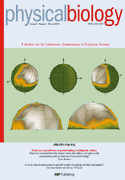
通过液体活检法,科学家能够为癌细胞“染色”,使得这些游走在血管中的特殊致命细胞在特殊光线照射下呈荧光色,从而帮助医疗人员追踪癌细胞扩散的方向,快速制定诊断方案。
据英国《每日邮报》2月3日报道,美国科学家日前发现了一种新的癌细胞体内定位技术——“液体活检法”。通过这种方法,科学家能够为癌细胞“染色”,使得这些游走在血管中的特殊致命细胞在特殊光线照射下呈荧光色,从而帮助医疗人员追踪癌细胞扩散的方向,快速制定诊断方案。
活检是活体组织检查的简称,是在治疗前后用手术方法或穿刺、内窥镜器械获取人体组织的一种病理学检查方法,其目的在于指导临床诊断、制定治疗计划,并随访证实治疗效果。据液体活检方法研究报告作者彼得·库恩教授介绍,液体活检技术的核心在于使用含有特定抗体的染色剂来绑定循环肿瘤细胞(CTCs)中的蛋白质,从而起到定位、染色和显色的效果。
库恩教授指出:“也就是说,一旦这些染色剂进入血液循环系统,就会自动搜索各种癌细胞的位置并迅速绑定在癌细胞外,并根据癌细胞内蛋白质的不同,显示出不同的荧光色。这样,医疗人员就可以通过高清显微镜直接追踪癌细胞扩散的方式和路径,或针对显微镜拍摄下来的图像做进一步临床分析,并及时诊断病人的病情。同时,这项技术还能够帮助我们了解癌细胞通过新陈代谢方式入侵人体其他部分的途径。”
据悉,研究人员已使用液体活检方式对68名癌症病人的血样进行了检测,均取得了理想的结果。这些病人中包含乳腺癌、前列腺癌和胰腺癌患者。使用液体活检技术后,其中50%至80%的病人每毫升血样中都发现了5个以上的循环肿瘤细胞。
美国国家癌症研究所的拉里博士表示,将液体活检这种自然科学研究中常用的检测方法应用于临床医学中是一项伟大的创举,对于癌症患者来说可谓是福音。

 Fluid biopsy for circulating tumor cell identification in patients with early-and late-stage non-small cell lung cancer: a glimpse into lung cancer biology
Fluid biopsy for circulating tumor cell identification in patients with early-and late-stage non-small cell lung cancer: a glimpse into lung cancer biology
Marco Wendel, Lyudmila Bazhenova, Rogier Boshuizen, Anand Kolatkar, Meghana Honnatti, Edward H Cho, Dena Marrinucci, Ajay Sandhu, Anthony Perricone, Patricia Thistlethwaite, Kelly Bethel, Jorge Nieva, Michel van den Heuvel and Peter Kuhn
Circulating tumor cell (CTC) counts are an established prognostic marker in metastatic prostate, breast and colorectal cancer, and recent data suggest a similar role in late stage non-small cell lung cancer (NSCLC). However, due to sensitivity constraints in current enrichment-based CTC detection technologies, there are few published data about CTC prevalence rates and morphologic heterogeneity in early-stage NSCLC, or the correlation of CTCs with disease progression and their usability for clinical staging. We investigated CTC counts, morphology and aggregation in early stage, locally advanced and metastatic NSCLC patients by using a fluid-phase biopsy approach that identifies CTCs without relying on surface-receptor-based enrichment and presents them in sufficiently high definition (HD) to satisfy diagnostic pathology image quality requirements. HD-CTCs were analyzed in blood samples from 78 chemotherapy-naïve NSCLC patients. 73% of the total population had a positive HD-CTC count (>0 CTC in 1 mL of blood) with a median of 4.4 HD-CTCs mL−1 (range 0–515.6) and a mean of 44.7 (±95.2) HD-CTCs mL−1. No significant difference in the medians of HD-CTC counts was detected between stage IV (n = 31, range 0–178.2), stage III (n = 34, range 0–515.6) and stages I/II (n = 13, range 0–442.3). Furthermore, HD-CTCs exhibited a uniformity in terms of molecular and physical characteristics such as fluorescent cytokeratin intensity, nuclear size, frequency of apoptosis and aggregate formation across the spectrum of staging. Our results demonstrate that despite stringent morphologic inclusion criteria for the definition of HD-CTCs, the HD-CTC assay shows high sensitivity in the detection and characterization of both early- and late-stage lung cancer CTCs. Extensive studies are warranted to investigate the prognostic value of CTC profiling in early-stage lung cancer. This finding has implications for the design of extensive studies examining screening, therapy and surveillance in lung cancer patients.
文献链接:https://iopscience.iop.org/1478-3975/9/1/016005?fromSearchPage=true







